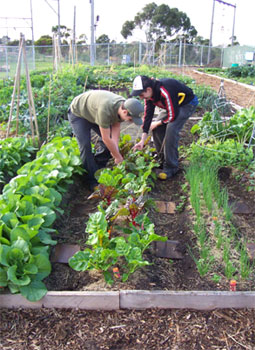Make Procedures
 A procedure is a series of actions, acts or steps which have to be executed in
the same manner in order to obtain the desired result. Procedures should be clear, concise, easy to follow and should be part of the arrangements made for safety
A procedure is a series of actions, acts or steps which have to be executed in
the same manner in order to obtain the desired result. Procedures should be clear, concise, easy to follow and should be part of the arrangements made for safety
Procedures spell out the safety roles and responsibilities throughout the organisation. Where appropriate, key individuals or their job titles should be named, and responsibilities defined within a job description. This will apply to specialists (eg. herdsmen etc.) as much as to farm managers. In smaller organisations it is probably more important to work out who does what, in order to not overburden anybody with everything.
Any procedure will consist of a series of steps. Most functions on a farm or holding, can be broken down to five steps: 1. Before start, ask: "Am I prepared?" 2. "Is the machine/equipment/substance properly prepared?" 3 While Working - work according to instructions, do not defeat defences. 4 Maintenance - stop before you start. 5 Deal with stoppages - a common issue on the land.
More details can be found in the Step by Step Guide for Farm Machinery (below).
If you are responsible for implementing procedures, these are the elements to follow to create such a 5-step procedure.
Identify before work starts how it should be controlled. Specifically this should include the following:-
(1) Consider alternatives
(2) Examine the circumstances of intended use
(3) Determine safe practices
(4) Provide comprehensive and comprehensible information, instruction and training regarding safe working methods
(5) Establish a system of maintenance to include user checks and periodic examinations by a competent person.
6) Any defects should be removed from service
7) Issue checklists to users, supervisors, and union reps to supplement training.
Licensed under the Creative Commons Attribution 2.5 License
LANTRA Awards: Controlling Risks in Agriculture Level 3